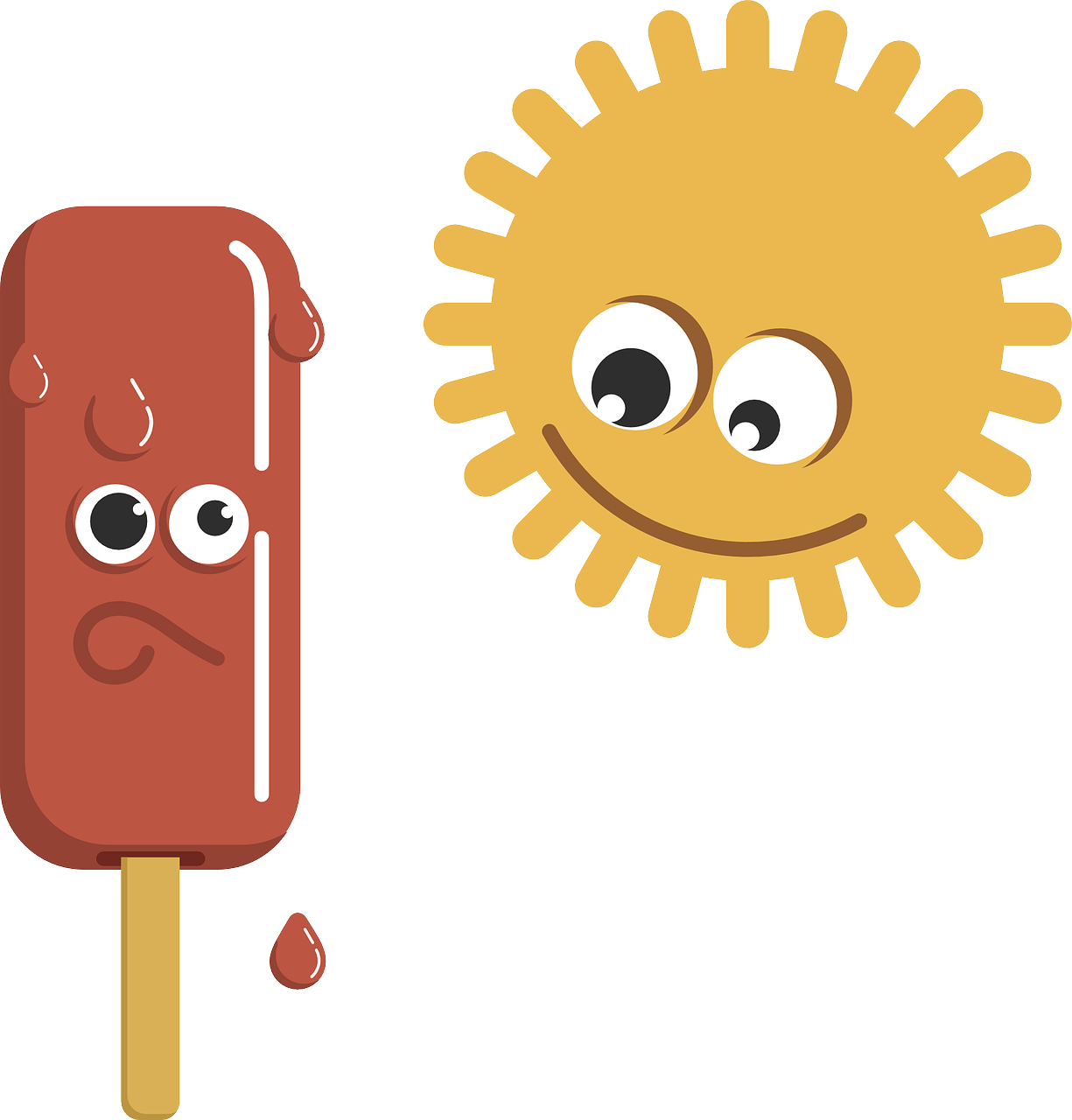Climate Change With Purpose
How to Acclimatize Everywhere
Last week as the arctic blast settled over the country, two friends complained to me about weather—one is thinking of moving from the south to the north but is dismayed at the prospect of dealing with such cold, and another is freaked out by climate change and the prospect of summers where the temperature creeps up into the hundreds with high humidity, and the danger this presents to life and limb.
The following guide to coping with climate is the result of those conversations…
The Wallop
It was ninety-five in the shade, and I had lawns to mow. Very lucrative lawns. One in particular was in a house in a swanky district of one of the most expensive towns in the world.
The house had been on the market for five months, over the spring, and not occupied. Now it was about to get the royal show treatment, so it needed to look smart. The lawn was ½ acre, four feet tall and dry, mostly foxtails and thistles. A combine harvester would have been a better idea, but all I had was a lawnmower and a rake (I had figured out how to fit both into my 1987 Firebird) and a burning need for gas money. The job paid $120 and would take me two-to-three hours, tops, at a time when minimum wage was around $5/hr. I was on the job.
By the time I was done, the lawn was flat.
So was I.
I laid on the bare kitchen tile in the empty house and watched the room spin around me. An hour after I didn’t turn up at my next stop, that client came looking for me. She found me half dead on the floor. She helped me to her house, a block away, put me on the couch with ice packs, and begged me to drink some water.
I wish I could say I don’t remember much of the next four hours. Truth is I remember every agonizing moment, as I tried to drink, then threw it up, then tried to eat, then threw it up, all the while looking through eyes that were half-blind as if someone had put paper towel tubes in front of them, and then stuck gauze covered with glittery Vaseline over the ends. My pulse throbbed, and with every single beat of my heart a wave of nausea ran around my middle and sledge hammers cracked into my eyeballs and into the back of my skull just where the spine emerges from the brain case.
Somewhere in all the nibbling and purging and hammers-to-the-brain I must have managed to hold on to enough liquids and salts to stabilize. Or maybe going through all that ice and cold towels and cool showers cooled my body off enough that I could hold on to those salts and liquids. Whatever it was, I managed to live through what a medical professional would later tell me was the kind of heat stroke that should have killed me.
All because of a ninety-five degree day, with low humidity, when I was working shirtless and with regular trips to the hose to douse my head.
Ninety-five is below body temp. Granted, it’s not a good temperature for cooling the heat that comes off a body that’s working, but it’s still the kind of heat that most people, throughout most of history, dealt with routinely.
After that, I was so gun shy about weather extremes that, when I finally left the Bay Area decades later, I looked for a climate that was even milder—and found one (not an easy task).
But from there, fast forward just a few years...
The Turnaround
I was waylaid in an interstate move by car trouble. I sat on a porch in 130 degree heat, writing a book and editing a trilogy of audiobooks during the weeks I had to wait for the mechanic to do his thing. I was on the porch because it was literally the only place I could find to set up shop while I waited, in the midst of the worst heatwave in recorded history for that area of the country.
I was on that porch for the full heatwave, only ever going into an air conditioned space to find a bathroom, and otherwise leaving to face the full glare of the sun in order to get exercise and walk the dog. Never once did I experience any discomfort beyond the slickness of too much sweat accumulating between my back and the chair.
More astonishing still, I wasn’t just comfortable at temperatures that would have sous vide a lesser Dan—I, who had only seen snow between one and two dozen times between birth and my fortieth birthday, was now also quite comfortable sitting outdoors in very cold weather and writing stories with only a small fire nearby to occasionally warm my fingers and toes (ten degrees Farenheit is about where I get chilly). Less than five years after that, later I would be regularly walking and working outside at twenty-below-zero.
The turnaround from a climatically super-fragile creature who literally would have died in a strong heatwave to one who’s brazenly street-hiking at 130 and forest-hiking and doing chores at -20 happened the same way that gong broke happens: gradually, and then all at once.
Going for Broke
In this case, the “gradually” was learning that I could, in fact, take temperature shocks for a moderate amount of time, if I did it the right way. Hot tubbing (which I had to learn to tolerate in order to cope with chronic pain stemming from a series ofchildhood injuries) taught me that I could stand being a poached egg for short spaces of time, so long as I gave myself a cool-down period afterwards.
A hot tub on a cold night was optimal because all I needed to to to get those breaks was to sit up on the side of the tub, or stand next to it, and I could continue the conversations with my fellow soup-dumplings without making myself heat sick.
Over time, as I gained more confidence in my ability to tell when I was actually in danger, my tub-time-to-cooling-time ration shifted in favor of the heat.
This was mostly a matter of confidence rather than of acclimatization—acclimatization came later.
The “all at once” part? A friend was in trouble, and that trouble meant I had to do a lot of heavy construction work in the heat on very short notice. The job wound up getting me stuck in a part of the country where they have lots of heat and lots of humidity.
I didn’t have much of a choice—I could leave my friend stranded, or I could acclimatize, or I could die trying. So I got to the hot and inhospitable place a few days early, I got myself a good Gatorade and water supply, a hat and some sunglasses, and I went out into the 98 degree heat and the 90+% humidity, and I sat.
I sat on a bench and read a book.
When I got bored, I walked around the neighborhood and sat in the shade of a big tree while listening to audiobooks.
I stretched my walks longer, and put a little work into them.
By the end of a week, I was more comfortable outside than in the air-conditioned indoors. More than that, I was actually cooler outside than I was indoors.
My body, you see, had learned to manage its heat and fluids in the thick and sticky swamp-weather of New England. When it went inside to the cool-and-dry, it didn’t know what to do with itself, so it closed down its cooling system and held on to all its heat.
Not long after that I found myself in danger of experiencing winter (trust me, for a San Francisco native, this is actually a danger, and potentially a deadly one). I remembered my New England lesson, and I made it a point to not put a coat on as the weather turned. I kept track of my fingers and toes, and as long as they weren’t numb or in pain, I dressed so that the rest of me was just a little uncomfortable. By the time winter really rolled in, despite the fact that I was now thinner than I’d been in my entire adult life (and thus, less natively insulated), I was happy to spend as much time out in the weather as possible.
The Nature of Living Systems
The thing about living systems—be they climates, economies, ecosystems, communities, or bodies—is that they can exist in only two states:
Growth, and decay.
Unlike machines, they are incapable of maintaining a steady state. The closest they get is “homeostasis,” which is the word we’ve given to dynamic balancing, like a juggler on a high-wire. In homeostasis, some parts of a system are growing, and others are shrinking or decaying, and these two things are, for the moment, in balance with one another.
Such moments never last.
When a child reaches up and touches a hot stove—or when a teenager mows a lawn on a hot day—the resulting trauma teaches the subject to not reach quite as far next time. Who wants to be burned? Who wants to die of heat stroke?
And then, every time there is danger of a similar hurt, the subject will repeat the solution that worked last time—they will reach less far than they previously did.
Eventually, the available field of action will shrink to such a point that the endeavor at issue is not worth bothering with. This is how interests, communities, people, and cultures die.
The trick to acclimatizing to new weather is to do what seems insane:
Reach for that stove.
Get just a little closer than you think you can handle.
Stay there, until it’s comfortable. Back off and take a rest if you need to.
Then reach again.
Once you’ve hit the limit of what you can truly handle, look around for other tricks—coats and gloves and layering in the cold, water spritzers and hats and sunglasses and more skin exposure in the heat (this strategy also works for getting your skin to stop sun-burning anytime a flashlight hits you, by the way).
Do this, and you can comfortably acclimatize to anything from the Arctic Circle to the Mojave Desert in the space of weeks—or even days.
If, on the other hand, you stick to your climate controlled buildings and vehicles, you will remain forever fragile to weather—and when the power goes out during a heat wave or a cold snap, your loved ones might see your name on the news.
No matter what your capabilities—be they meager or prodigious—you have more adaptability and strength at your disposal than you think. If humans could conquer the arctic and the tropics before they learned to smelt metal, if humans could survive Dachau and Siberia and Tamerlane, then you, with all your modern advantages, can learn to survive—and thrive—under any conditions the world can throw at you.
So don’t fret about being able to survive climate change or cross country moves. Instead, go forth, and breathe the free air! You have nothing to lose but your pain.



